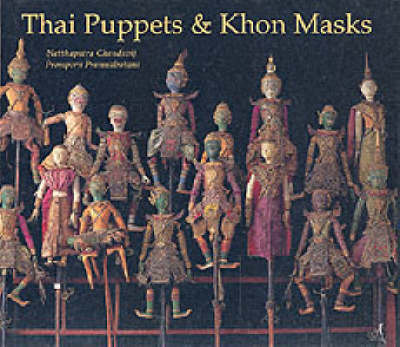River Books
1 total work
Thai Puppets and Khon Masks
by Natthapatra Chandavij and Promporn Pramualratana
Published 1 March 1999
The elaborately fasioned and gilded masks worn by dancers performing in the popular "Ramayana" dance are one of the enduring symbols of Thai culture. Since their introduction at the beginning of the Rattanakosin period in the late-18th century, many hundreds of thousands of masks have been produced by skilled craftsmen. Less well known as an art form, the history of Thai puppetry dates back as early as the 11th century, when inscriptions from the north and central Thailand mention their role as an offering to the gods. This volume unites the puppets and masks from various collections and seeks to make this unique facet of Thai culture more widely known.
